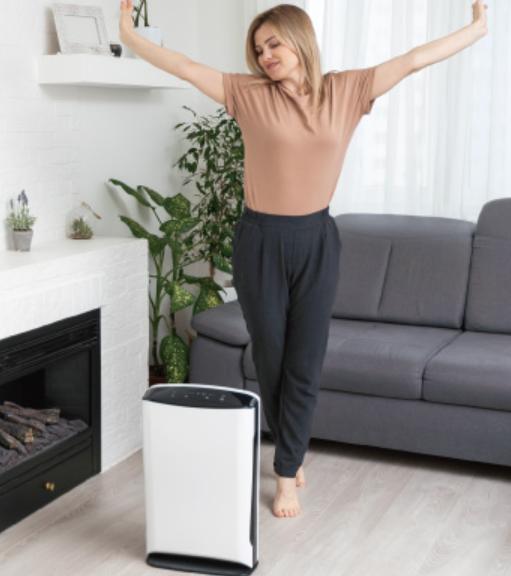Air purifiers have become essential for maintaining indoor air quality. With various models available, understanding how much electricity does an air purifier use is crucial. Knowing how much power they use helps in managing energy bills effectively. This guide will break down power usage, estimate costs, and provide tips for energy-efficient use so you can enjoy clean air without financial stress.

How Do Air Purifiers Work and Use Electricity?
Types of air purifiers and their power ratings
Air purifiers come in several varieties, including HEPA filters, activated carbon filters, UV light, and ionizers. Each type has a different power rating. HEPA filters typically range from 30 to 60 watts, while UV light models can use up to 300 watts. Understand the specific type of your purifier to gauge its energy consumption better.
Typical wattage and runtime expectations
On average, most residential air purifiers operate between 40 to 100 watts when active. It’s common to keep them running continuously to maintain air quality. This continuous operation affects electricity usage. Knowing the typical wattage helps estimate runtime costs and understand the impact on your electricity bill.
How to Calculate Air Purifier Electricity Usage and Cost?
Step-by-step formula to calculate kWh
To calculate the energy consumption of your air purifier, use the formula:
[ = ]
For example, a 50-watt purifier running for 24 hours uses 1.2 kWh daily (50 watts x 24 hours / 1000 = 1.2 kWh).
Estimating monthly and yearly energy costs
To find monthly consumption, multiply daily kWh by 30. For yearly estimations, multiply that result by 12. Keeping with the 50-watt example, monthly usage is 36 kWh (1.2 kWh x 30 days), and annual usage is approximately 432 kWh (36 kWh x 12 months). Multiply kWh by your local electricity rate to find the cost. If your rate is $0.12 per kWh, the yearly cost for this purifier would be $51.84.
What Affects How Much Electricity an Air Purifier Uses?
Room size and purifier capacity
Larger rooms need more powerful purifiers. Higher capacity models use more electricity. Match the purifier to your room size to avoid unnecessary energy usage.
Fan speed and usage frequency
Running your purifier at higher fan speeds increases consumption. Balance fan speed with air quality requirements to optimize energy use. Also, the frequency of use affects consumption. Intermittent use saves energy compared to continuous operation.
Filter type and maintenance
Clogged filters force the unit to work harder, consuming more power. Regular maintenance and timely filter replacements keep energy use efficient. Understand your unit’s specific filter type and its impact on energy use.
How to Use an Air Purifier More Efficiently?
Optimal placement and usage times
Place the air purifier in areas with most airborne contaminants, typically near pollution sources or high-traffic areas. Use the purifier more during peak pollution times, like morning or evening, and less during off-peak times.
Energy-saving modes and smart settings
Use energy-saving modes if available. Some models adjust power usage based on air quality, running less frequently when air quality is good and more when it’s not.
Choosing energy-efficient models (look for certifications)
Look for Energy Star certifications when purchasing. These models meet energy efficiency guidelines and consume less power while maintaining performance.

Conclusion
Understanding the power usage of your air purifier empowers you to manage your energy expenses. Wondering how much electricity does an air purifier use? Calculate the consumption, know the factors affecting it, and learn efficient usage tips. Keeping your air clean doesn’t have to be costly with mindful usage.
FAQ
Does leaving an air purifier on all night consume a lot of energy?
Leaving an air purifier on all night increases energy consumption. However, using energy-efficient models and settings can minimize the impact.
Can an air purifier significantly raise my electric bill?
An air purifier adds to the bill, but it’s not usually a significant increase. Efficient models and mindful usage can minimize any spikes in electricity costs.
What is the most energy-efficient way to use an air purifier?
Place the purifier optimally, use energy-saving modes, and maintain filters regularly. Choose certified energy-efficient models for best results.